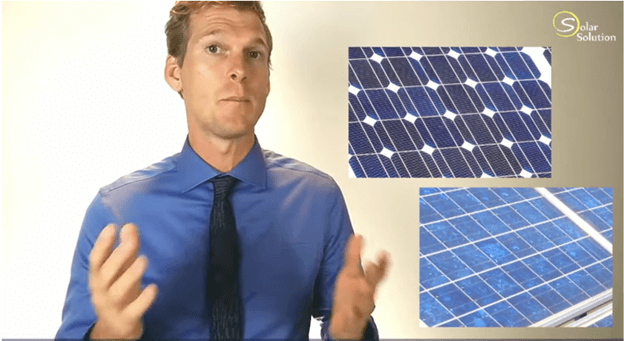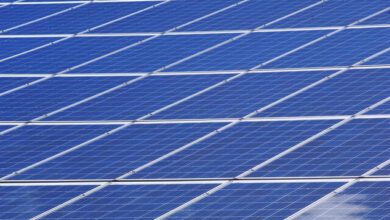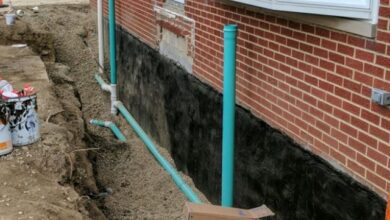Different Types of Solar Panels and How They Work

When wondering which solar panels to install to provide clean energy to a home or business, it is essential to understand the types of solar panels. The differences between photovoltaic modules depend on the installation method, appearance, material of manufacture, performance, and cost.
There are four types of solar panels based on these criteria – single-crystal, thin-film, polycrystalline, and PERC panels. Each has advantages and disadvantages, limitations for location, conditions, and efficiency. To select equipment that meets the individual needs of the user, it is important to understand the distinctive factors and properties of different types of solar modules, which is the subject of the article.
Monocrystalline solar cells
How does a person decide where to order the installation of solar equipment? Basically, the solar companies nearby are preferred. But do not forget about the differences between the models.
The most popular are monocrystalline panels. They are made of silicon crystal cut into plates that form octagonal cells. You can distinguish them from other types of solar modules by dark blue or black color and rounded edges. Features of monocrystalline-type panels:
- high output power;
- the longest service life among photovoltaic modules;
- high-efficiency indicator – efficiency is 17-22%;
- compactness;
- high-temperature resistance.
There is a unique arrangement of cells in the design of these panels. The module consists of two series – upper and lower. If a shadow falls on one half of the panel, the other generates energy. But such characteristics of photocells increase the price tag for the panel.
Polycrystalline or multi-crystalline panels
These types of solar panels are made from several silicon crystals. They are melted, cooled in square molds, then cut into plates, and assembled into a polycrystalline module. This production method allows efficient use of the material with almost no waste, making the panels more affordable.
Differences between polycrystalline solar modules:
- lower efficiency compared to the single-crystal version due to the limited space for the movement of electrons (efficiency 15-17%);
- take up more space
- shorter service life due to the negative effects of high temperatures;
- low-temperature resistance – less productive at high ambient temperatures.
The panels have a brilliant blue tint, and the cells are square with straight edges. A simple manufacturing process and lower silicon costs lead to the more affordable price of solar modules.
PERC PV modules
These panels are an improved version of monocrystalline modules using advanced technology. The presence of a rear-passivated emitter is their main characteristic.
Solar radiation entering the photovoltaic cells is absorbed only to a certain extent. The rest of the energy is going through the module. In PERC systems, an additional passivation layer is applied to the back sheet of the cells, which repels unabsorbed energy. This technique increases the productivity of the panels. Features of PERC modules:
- reflecting unabsorbed light into the cell and increasing the amount of absorbed solar radiation;
- reduction of natural recombination of electrons in the system;
- absorption of light waves with a length of more than 1180 nm, which also prevents heating of the back sheet of the panel;
- get solar energy with a smaller panel area.
The technology for the production of Mono-PERC solar panels is applied. They are the most expensive on the solar equipment market, but other types of panels cannot compare with them in terms of rated power. Although the cost is higher than other types, this is dictated by the necessary materials. The price tag on the PERC model is slightly different from the traditional single-crystal options.
Thin-film solar panels
The distinction between different solar panel types is in the specifics of production. Thin-film options are fundamentally different from the types of panels described above. They are made by applying photovoltaic substances from CdTe, a-Si, and CIGS to a glass, metal, or plastic surface.
These panels are very thin, flexible, and light, and do not require an additional substrate for the frame during installation. Available in standard sizes with 96, 72, and 60 cells. Their efficiency is lower than silicon counterparts. Considering the material of manufacture, each subspecies of a thin-film solar panel has its characteristics.
CdTe
Cadmium telluride modules cost the same as polycrystalline panels. They leave the lowest carbon footprint, require the least amount of water in production, and pay for themselves quickly (within 1 year), but the recycling of panels at the end of their useful life is more expensive due to the toxicity of cadmium.
a-Si
A characteristic feature of amorphous silicon modules is their shapeless nature. They differ from other types of solar cells (poly- and single-crystal) in that silicon in a-Si-panels is not structured at the molecular level.
Only a small amount of silicon is in use to produce the cells, which reduces production costs. This type of solar cell is in use in devices that require little electricity, such as pocket calculators.
CIGS
The combination of indium, copper selenide, and gallium, which is deposited on a plastic or glass surface, makes it possible to achieve high productivity of photovoltaic cells among thin-film panels, although they are significantly inferior to crystalline silicon modules in terms of efficiency.
Thin-film photovoltaic modules are ideal for large rooftop or outdoor spaces, and the low cost widens the consumer base.
What factors is it better to consider when choosing the type of solar panel?
Cost, power, and efficiency are the main criteria for choosing the right type of photovoltaic cells. But a comparison of solar panel types should be carried out according to other criteria:
- temperature coefficient – indicates a decrease in the output power of the panel for each degree above 250 C of the environment, in crystalline elements this indicator is 0.3-0.5% / 0 C, in thin-film – 0.2% / 0 C, so the latter are more suitable for installation in hot regions;
- fire resistance – the panels must correspond to the fire resistance of the roofs on which they are installed. There are 3 fire resistance classes – A, B, C;
- light-induced degradation – LID indicates a loss of performance in the first couple of hours of exposure to the sun, the indicator depends on the quality of workmanship and is acceptable in the range of 1-3%;
- hurricane rating – modules with a high snow and wind resistance rating have ASTM E1830-15 standard;
- hail rating – crystalline panels withstand 50 mph hail impacts, and thin-film cells have a lower rating due to their flexible nature.
To figure out which type of solar panel is best, you need to consider the specifics of the property, the location of the solar panels, the amount of solar radiation received per day, and plans for a solar project. It is important to analyze how much free space is available for the location of the modules, and whether it is possible to save money by installing cheaper types of panels.
With limited space, monocrystalline solar systems are more beneficial. If there are no space restrictions, inexpensive polycrystalline cells will do. Thin-film modules are predominantly used on large commercial rooftops and residential buildings. The choice is yours!





